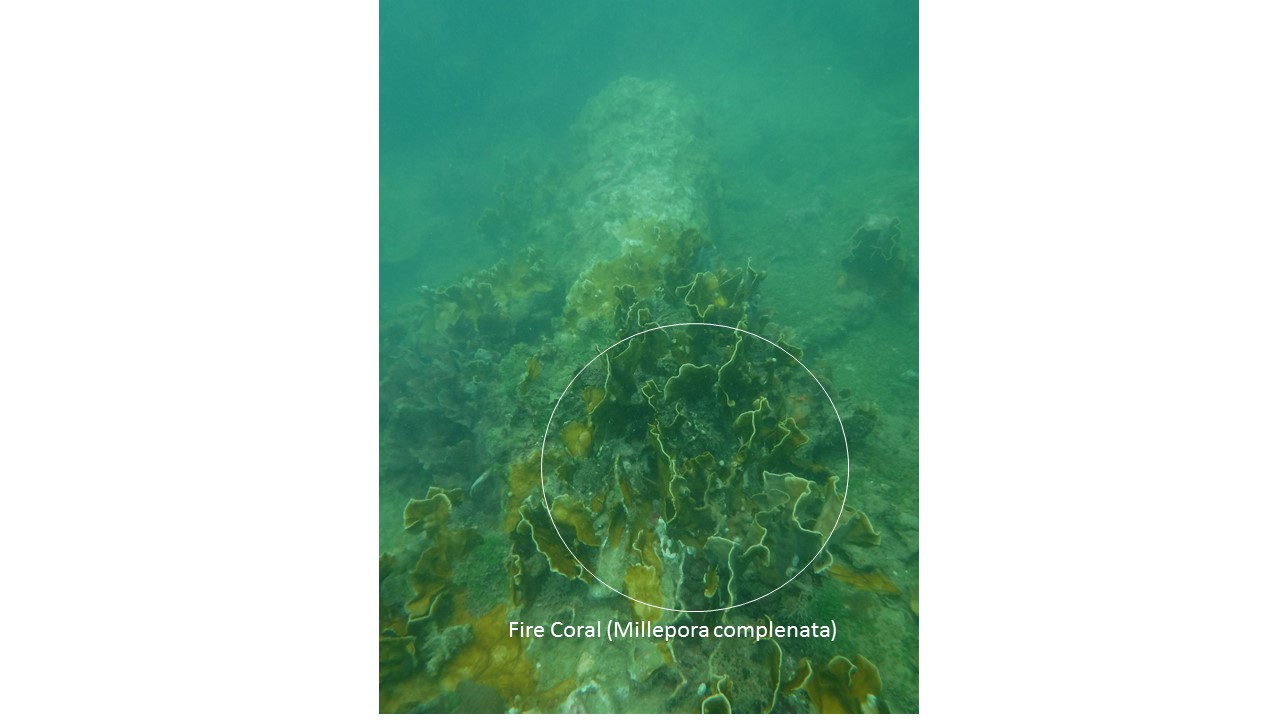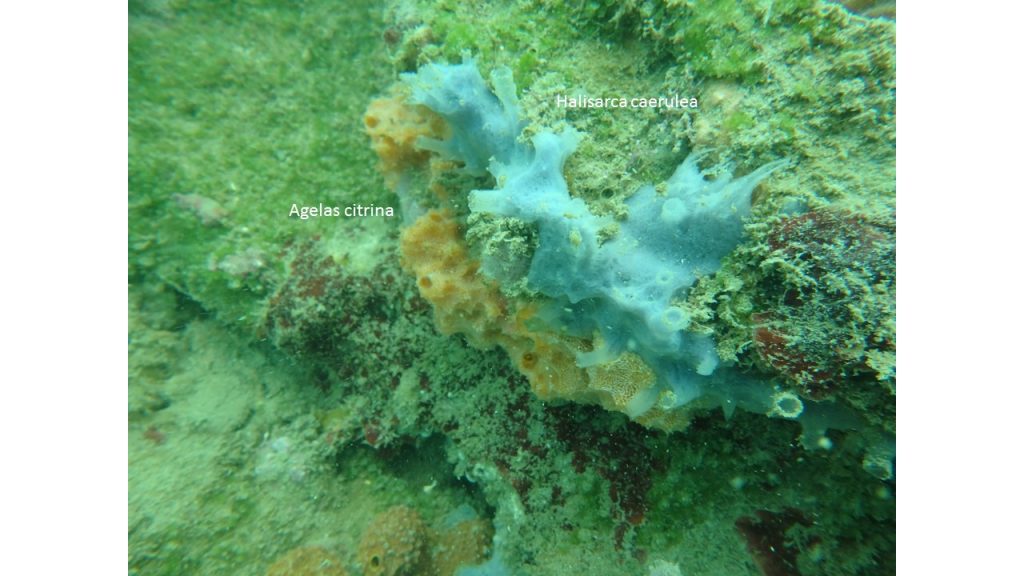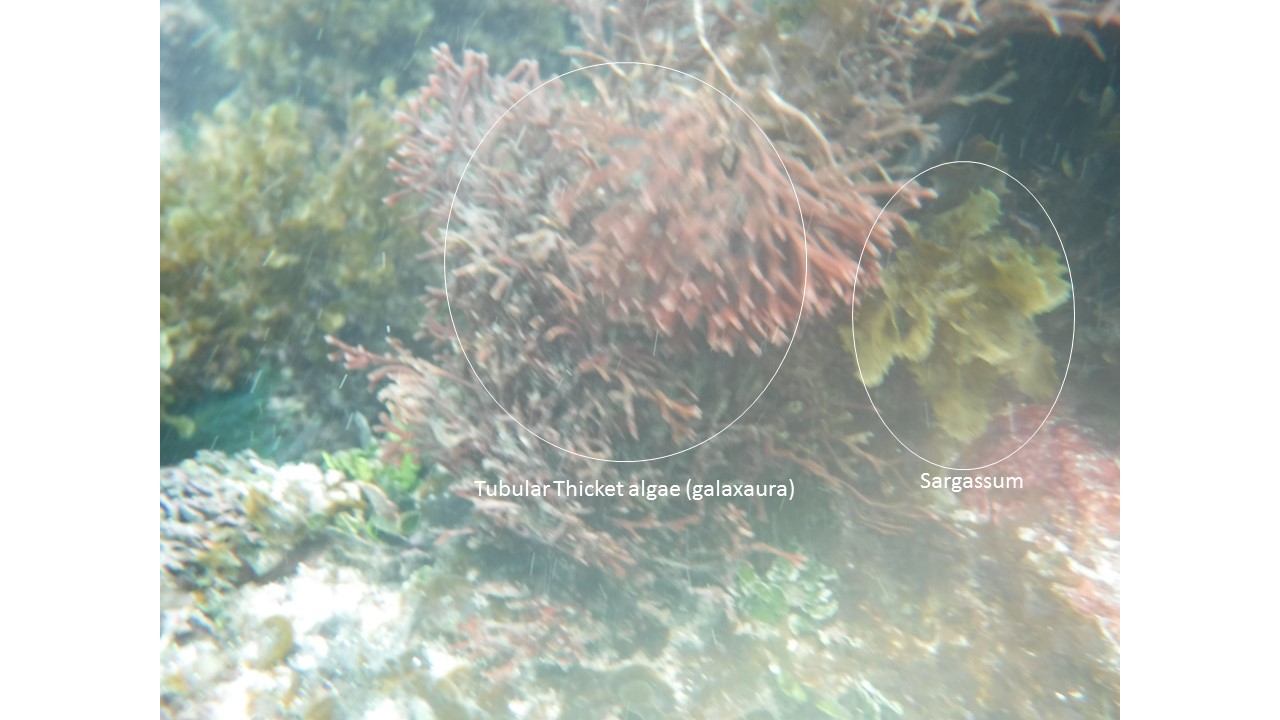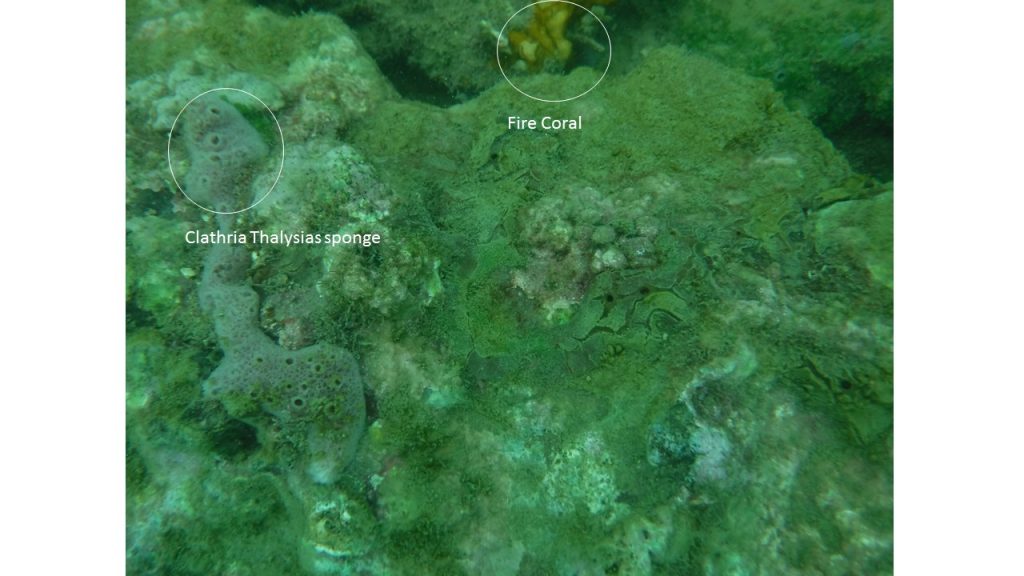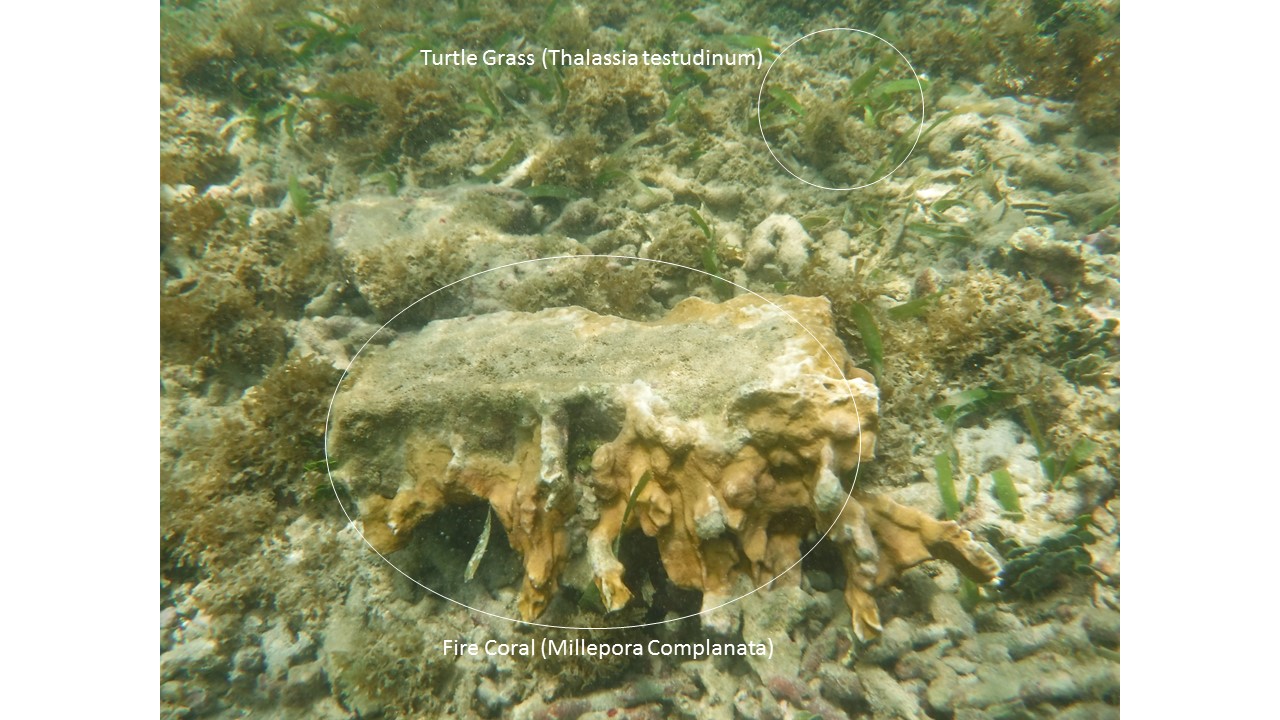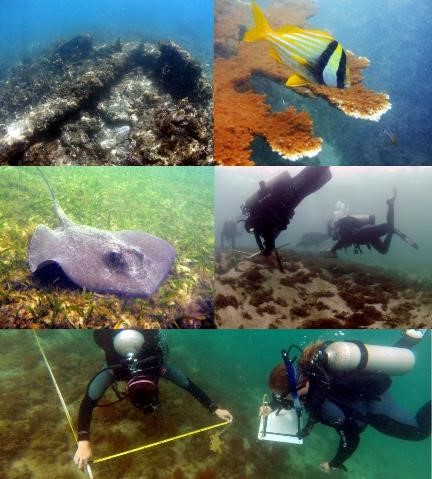
When comparing the Brick and Canon sites it is clear that there are some fundamental differences in the dominant life forms. The Brick Site is far sandier than the Canon Site, and features more large corals. In contrast, the Canon Site features more algae, sponges, hydroids and low-profile organisms. This difference could be related to the comparative lack of ferrous remains at the Brick Site, resulting in less turf algae. With less turf algae, coral are better able to colonize, and do not suffer the deleterious effects of close proximity to turf algae (Cetz-Navarro et al. 2015:2) which can actually harm the corals simply by proximity.
At the Brick Site, the presence of large coral heads and bommies indicates longevity, suggesting that the site is environmentally stable and has remained hospitable to the coral for an extended period of time. This environmental stability may be related to the protected nature of the site. The Brick Site is not immediately proximal to the Suarez river which empties into the ocean in the Cahuita National Park and often makes the water turbid, reducing sunlight penetration and stressing the coral (Cortés et al. 2010: 36). Despite reducing visibility, the river brings vital nutrients which likely permeate the waters around Cahuita point, and may provide a nutritional benefit to the corals of the Brick Site without the detriment of turbidity. This increased nutrient load from the land most likely helps the corals of the Brick Site and contributes to species diversity and a more robust ecosystem. Larger and more abundant corals that do not have to compete with algae provide a better environment for small reef fish, providing them with places to live, and ample sustenance in ways that low-coral areas do not (Syms and Jones 2000:2719).
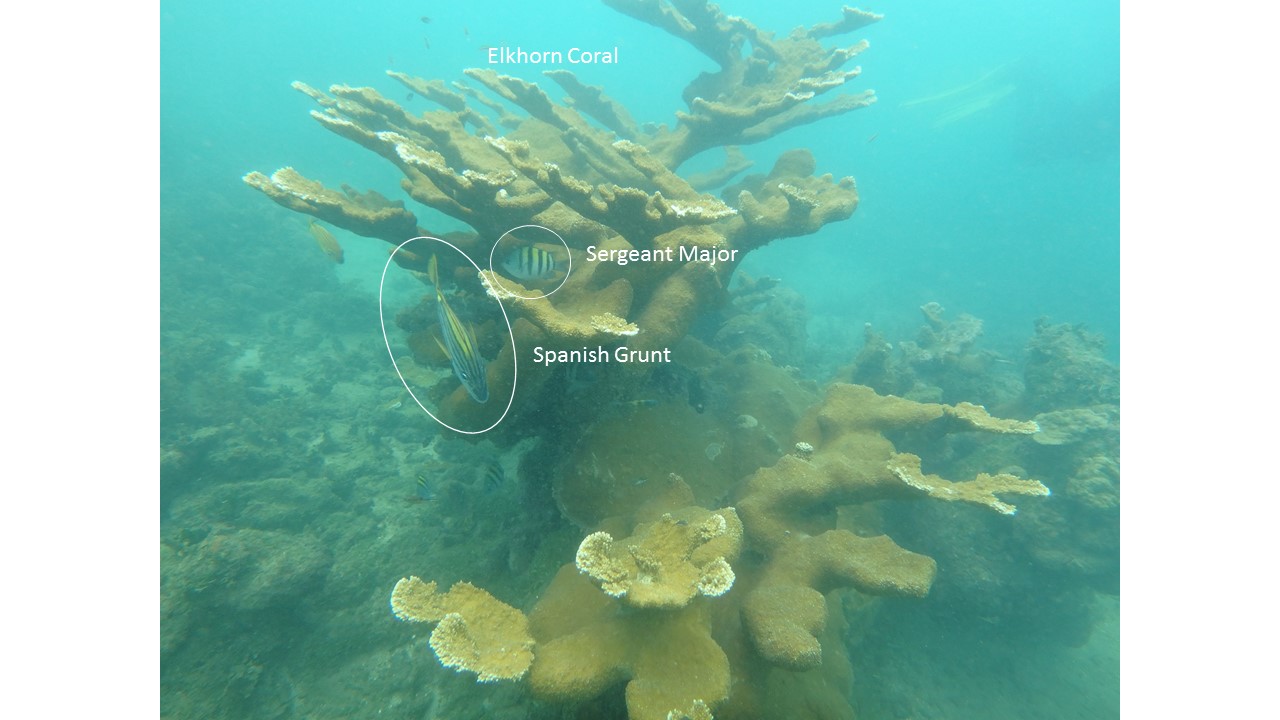
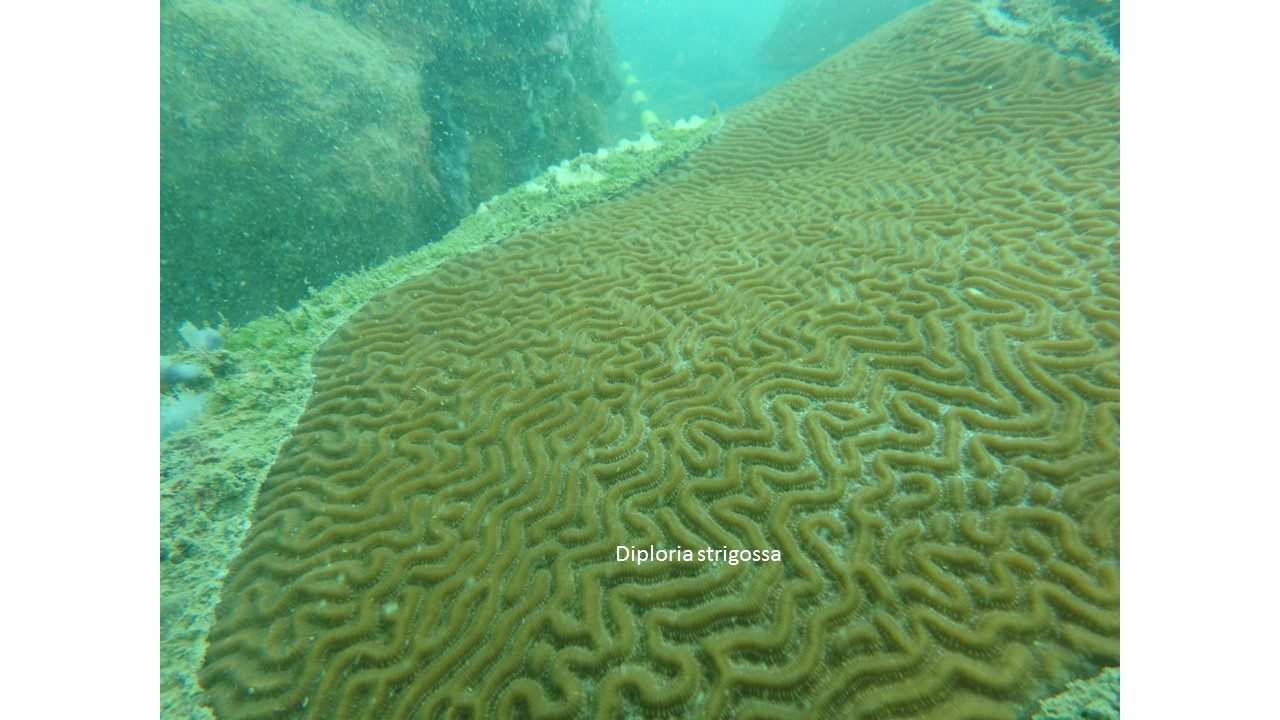
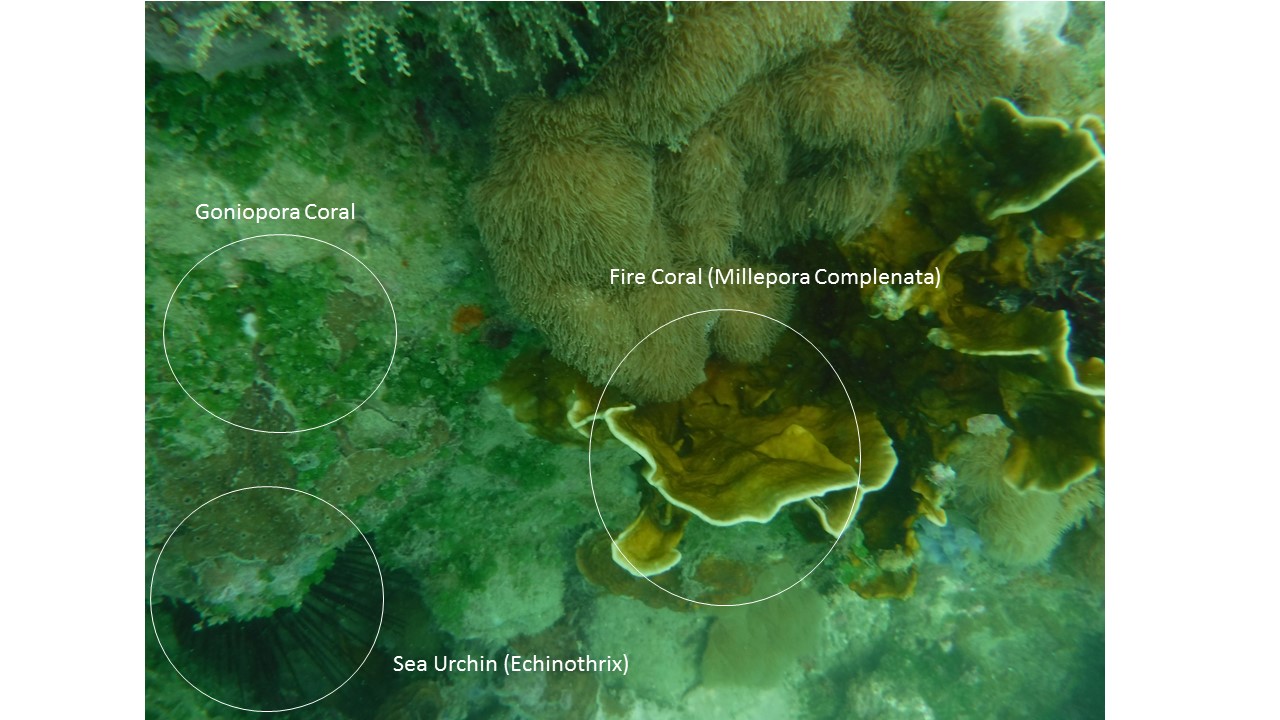
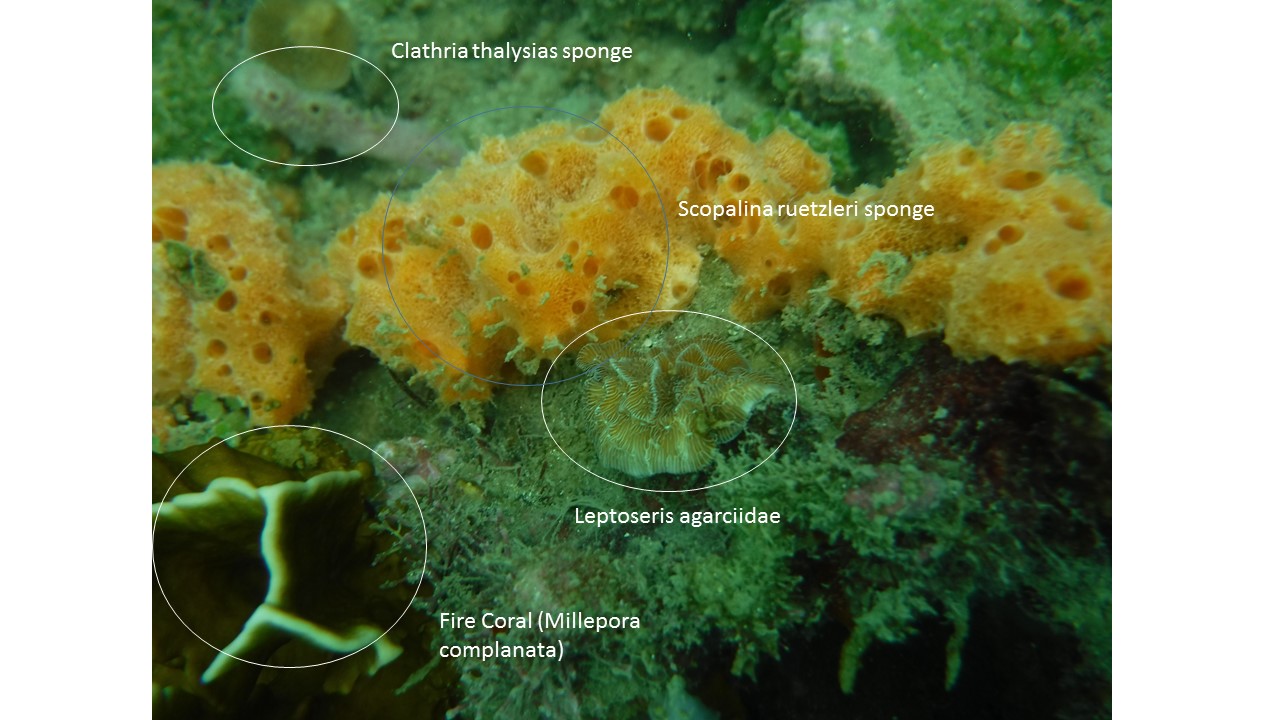
Based on the fish and marine life surveys, the Canon Site was dominated by algae, hydroids and sponges, with a less diverse and less abundant population of corals and fish. In contrast, the Brick Site featured diverse, large, healthy coral-heads with ample fish, both carnivorous and herbivorous, as well as rubble-dwelling and pelagic fish. The algae domination of the Canon Site is likely attributable to the presence of more ferrous material, and the coral domination of the Brick Site likely maintains a larger and more diverse fish population.
